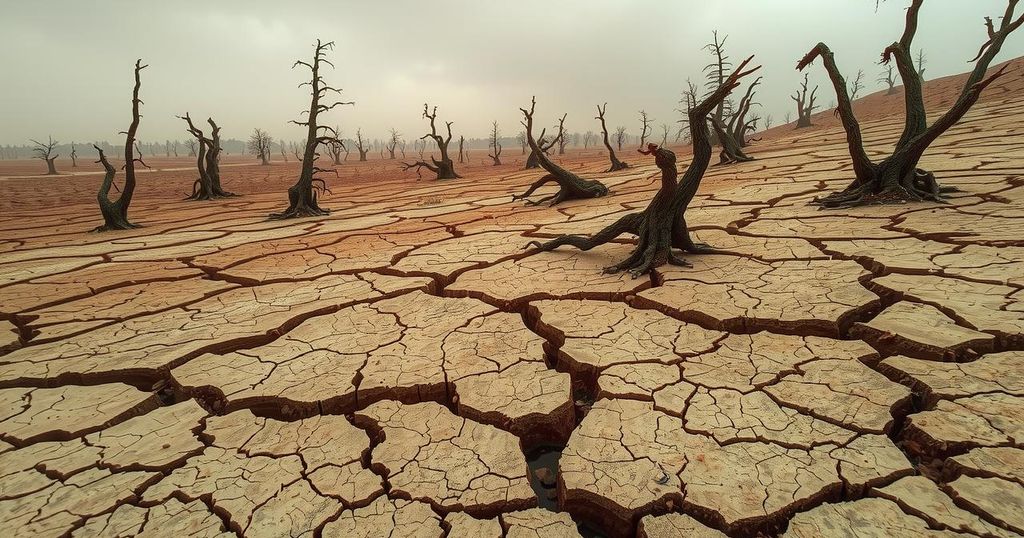Severe Environmental Disaster Occurs in Zambia Following Mining Embankment Failure

An embankment failure at a copper mine in Kitwe, Zambia, released over 50 million liters of wastewater into the Mwambashi River, resulting in environmental devastation, including fish kills and crop damage. The Zambian government has since initiated an investigation, while BirdWatch Zambia urges stronger regulations to prevent future incidents.
On February 18, 2023, an embankment intended for wastewater from copper mining operations collapsed in Zambia, releasing over 50 million liters of waste into the Mwambashi River. This river is a significant tributary of the Kafue River, which is the largest river entirely within Zambia. The mining operation is managed by Sino-Metals Leach Zambia, a company with Chinese ownership, located in Kitwe District in the Copperbelt Province.
The incident has led to severe environmental and public health repercussions, including the mass death of fish and damage to agricultural crops. The acidic effluent released poses significant risks to the well-being of both humans and animals, primarily because approximately 60% of Zambia’s 20 million residents rely on the Kafue River Basin for essential activities such as irrigation, fishing, and industry.
The Zambian government has reported that the effluent has caused extensive harm to crops, particularly maize and groundnuts, while the full extent of the damage remains indeterminate. The environmental ramifications include contaminated water supplies, increased levels of toxic heavy metals, disruption of local ecosystems, and serious health threats for communities dependent on the river.
The pollution has also led to unsafe irrigation practices and a potential build-up of toxins within the food chain, impacting key economic sectors like fisheries, agriculture, and tourism and burdening local authorities with substantial cleanup expenses. Long-term implications might encompass ongoing contamination and severe ecosystem degradation.
This affected region is recognized as a crucial biodiversity area housing unique wildlife, including the endemic Kafue lechwe and over 450 bird species, highlighting the ecological significance of this habitat.
In response to this ecological catastrophe, the Zambian government has initiated an independent investigation into water pollution in the Copperbelt, amid rising awareness concerning the deleterious effects of mining activities on the environment. BirdLife Partner BirdWatch Zambia (BWZ) has engaged in a coalition named ‘The Zambia Environmental Justice Coalition’ to address the environmental issues associated with ineffective management in the mining sector.
Mary Malasa, Program Manager at BWZ, voiced concerns about the repeat nature of such disasters, emphasizing that the damages inflicted on communities and ecosystems are intolerable. She stated, “Such incidents are preventable. While we commend the Zambian government for responding, a proactive approach is better than a reactive approach in preventing such disasters from happening in the first place.”
Additionally, BWZ is urging the Zambia Environmental Management Agency (ZEMA) to enhance regulatory oversight and enforce stricter measures to avert similar incidents in the future.
The environmental disaster in Zambia highlights the urgent need for effective regulatory measures and proactive governance in the mining sector. The release of toxic waste into the Kafue River poses significant health risks and damages local ecosystems, impacting livelihoods reliant on this vital water source. Immediate and comprehensive action is necessary to mitigate the long-term consequences of such incidents and to safeguard the natural and human resources of the region.
Original Source: www.birdlife.org







